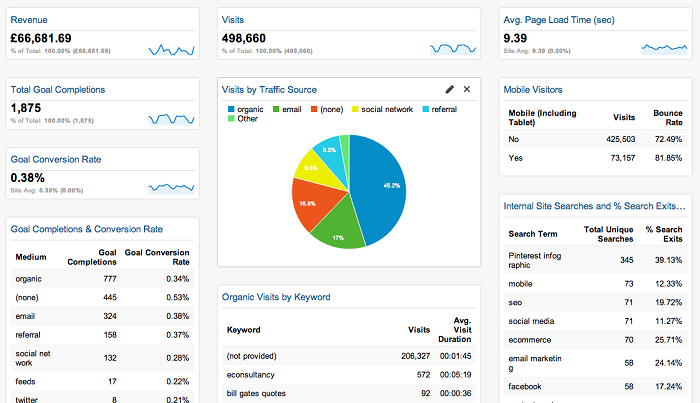Index Surge: Amplifying Your Insights
Stay updated with the latest trends and news across various industries.
Why Your Website Traffic Is All in Your Head: The Google Analytics Truth
Unlock the real secrets behind your website traffic. Discover how to decode Google Analytics and stop the myths once and for all!
Is Your Google Analytics Data Misleading You? Discover the Truth Behind Your Website Traffic
When analyzing your website traffic, it's crucial to understand that Google Analytics data may not always provide a complete picture. Factors such as bot traffic, filter setups, and even user privacy settings can artificially inflate or deflate your visit counts. For instance, if you're not excluding internal traffic from your reports, your data will reflect visits that aren't representative of your actual audience. Additionally, policies like GDPR may restrict tracking capabilities, leading to potential gaps in visitor data. Thus, it's vital to regularly audit your tracking setup and ensure you're collecting accurate insights that truly reflect your audience's behavior.
Moreover, metrics like session duration and bounce rates can also mislead your interpretation of website traffic. A high bounce rate might seem alarming, but it could indicate that users are finding what they need quickly or that your landing pages need optimization. To make sense of your Google Analytics data, consider segmenting your audience based on their behavior and source of traffic. By breaking down the metrics into actionable segments, you can derive meaningful insights and refine your marketing strategies to better reflect your audience's needs.

5 Common Google Analytics Misconceptions That Could Be Hurting Your Business
Understanding Google Analytics is crucial for any business looking to improve its online presence, yet several common misconceptions can lead to misguided strategies. One prevalent myth is that Google Analytics automatically tracks all relevant metrics without any setup. In reality, while it collects a wealth of data out-of-the-box, companies often need to customize their implementation to capture specific events or conversions that matter to their goals. Without proper tracking setup, vital insights could be missed, severely limiting the potential for growth.
Another misconception is that a high number of website visits always translates to success. It's essential to recognize that quality trumps quantity; traffic with poor engagement or low conversion rates may indicate that your content doesn't resonate with the target audience. Additionally, many believe that a low bounce rate equates to a successful website. However, context is key—some visitors may find what they need quickly and leave, which doesn't necessarily signify a failure. Businesses should focus on meaningful metrics that reflect true engagement and profitability, rather than relying solely on generic data points.
How to Interpret Your Google Analytics Data for Real Traffic Insights
Interpreting your Google Analytics data is essential for gaining real insights into your website's traffic. Start by focusing on the Audience Overview, where you can analyze metrics such as sessions, users, and pageviews. Understanding these numbers gives you a clearer picture of how visitors engage with your site. Look for trends over time; for instance, if you notice a spike in traffic, investigate what content drove that increase. You may also want to segment your data by demographics or geographic locations to see which audiences are most engaged.
Next, delve into the Acquisition section to discover how users are finding your site. This section breaks down traffic sources, whether it's through organic search, social media, or direct traffic. By identifying which channels bring the most valuable traffic, you can allocate your marketing efforts more effectively. Additionally, consider evaluating the Behavior Flow report; it visually represents the journey users take on your site. This can highlight any potential drop-off points or popular content, allowing you to optimize the user experience and improve your site's SEO strategies.